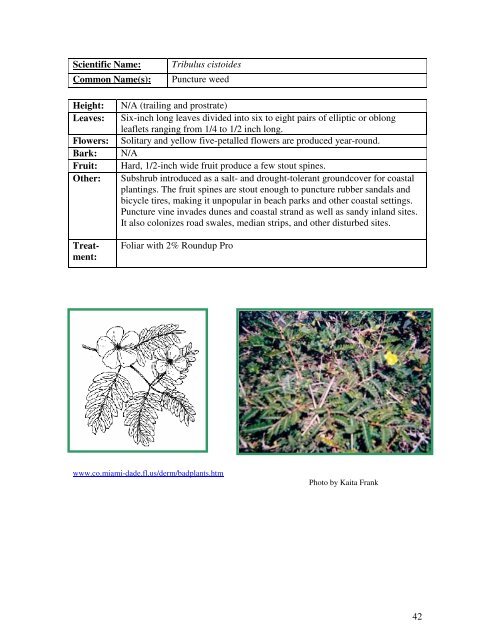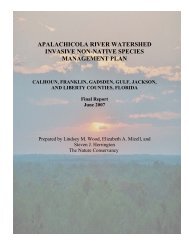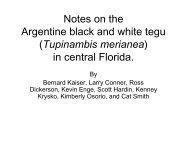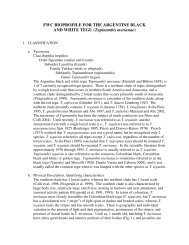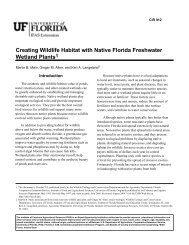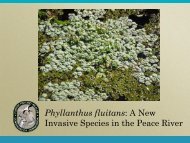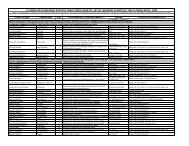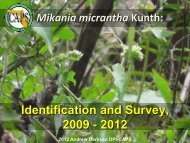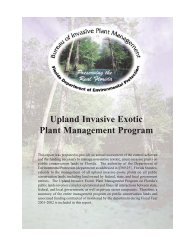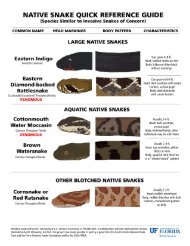Identification Guide For Invasive Exotic Plants of the Florida Keys
Identification Guide For Invasive Exotic Plants of the Florida Keys
Identification Guide For Invasive Exotic Plants of the Florida Keys
You also want an ePaper? Increase the reach of your titles
YUMPU automatically turns print PDFs into web optimized ePapers that Google loves.
Scientific Name:<br />
Common Name(s):<br />
Tribulus cistoides<br />
Puncture weed<br />
Height:<br />
Leaves:<br />
Flowers:<br />
Bark:<br />
Fruit:<br />
O<strong>the</strong>r:<br />
Treatment:<br />
N/A (trailing and prostrate)<br />
Six-inch long leaves divided into six to eight pairs <strong>of</strong> elliptic or oblong<br />
leaflets ranging from 1/4 to 1/2 inch long.<br />
Solitary and yellow five-petalled flowers are produced year-round.<br />
N/A<br />
Hard, 1/2-inch wide fruit produce a few stout spines.<br />
Subshrub introduced as a salt- and drought-tolerant groundcover for coastal<br />
plantings. The fruit spines are stout enough to puncture rubber sandals and<br />
bicycle tires, making it unpopular in beach parks and o<strong>the</strong>r coastal settings.<br />
Puncture vine invades dunes and coastal strand as well as sandy inland sites.<br />
It also colonizes road swales, median strips, and o<strong>the</strong>r disturbed sites.<br />
Foliar with 2% Roundup Pro<br />
www.co.miami-dade.fl.us/derm/badplants.htm<br />
Photo by Kaita Frank<br />
42


